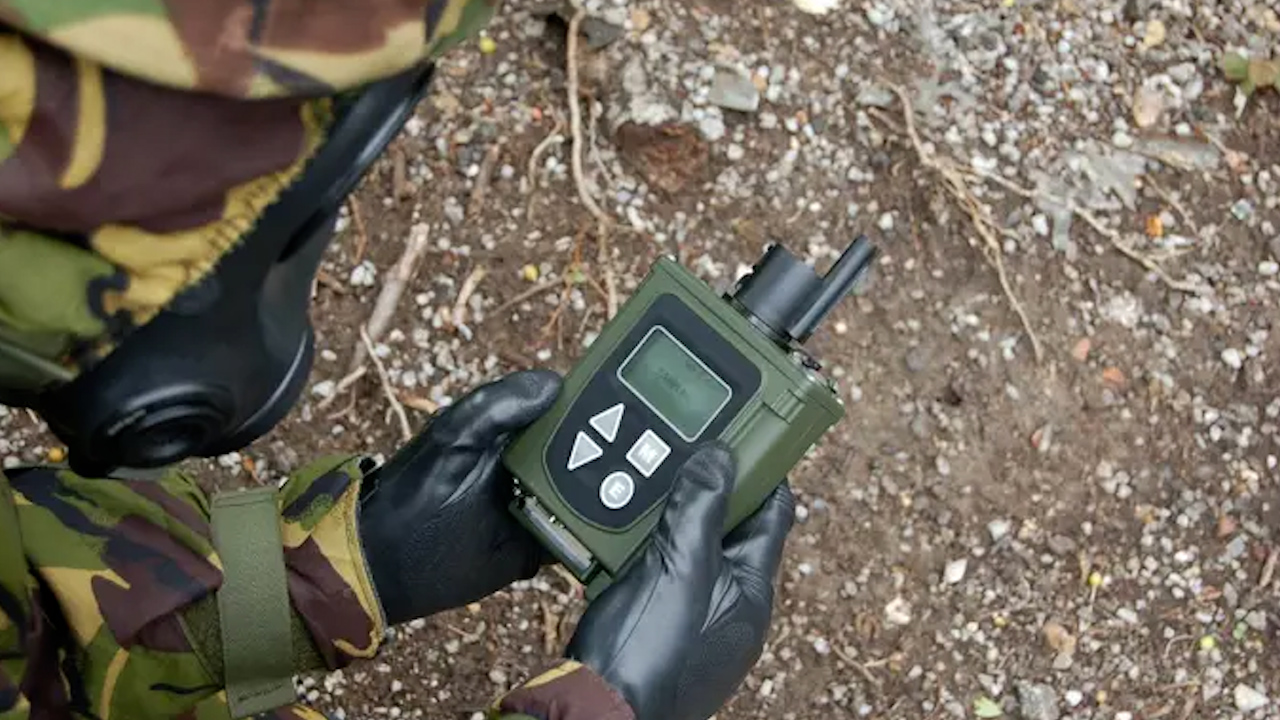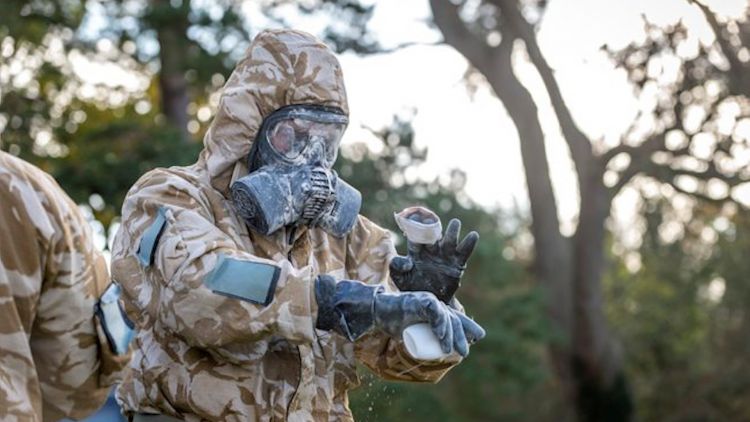
Armed Forces' CBRN defences boosted by new £88m chemical sensor deal

The ability of Armed Forces personnel to function in a CBRN (Chemical, Biological, Radiological and Nuclear) battlefield environment is being boosted by the provision of new chemical sensing equipment.
Serving personnel across the British Army, Royal Navy and Royal Air Force will benefit from wearable personal chemical agent sensors, ensuring they can detect dozens of toxic chemical threats and take immediate action to protect themselves.
The plan is headed by the Strategic Command alongside a pan-defence team and is due to take effect by 2028.
The wearable sensor is one of three that are being developed by British company Smiths Detection for use in a potential Chemical, Biological, Radiological and Nuclear environment.
Company president Roland Carter said: "We're honoured to have been selected by the UK Ministry of Defence (MOD) to supply this next-generation technology.
"Since our business inception nearly 70 years ago we have been designing, developing, manufacturing and servicing chemical sensing technology.
"This technology protects defence forces, including the UK MOD, and communities from known and emerging threats.
"This award is a testament to our leading technology and the knowledge, commitment and ingenuity of the people in our organisation who every day help to make the world a safer place."
The personal chemical agent sensor will continually monitor the environment around the user.
Also under development is the survey chemical agent sensor, which is a portable device that checks potentially hazardous areas or surfaces.
Personnel will also be issued with a standoff chemical sensor which is enhanced for use in fixed locations.
Defence Procurement Minister James Cartlidge said: "It's vital we protect our service personnel, and this cutting-edge technology is so important to reduce the threat posed by toxic chemicals across a range of environments globally.
"Not only is it an impressive piece of equipment that will be designed and manufactured here in the UK, but the ability for it to be continually developed and improved is exactly how we want defence procurement to be – deliverable, effective and ambitious."










